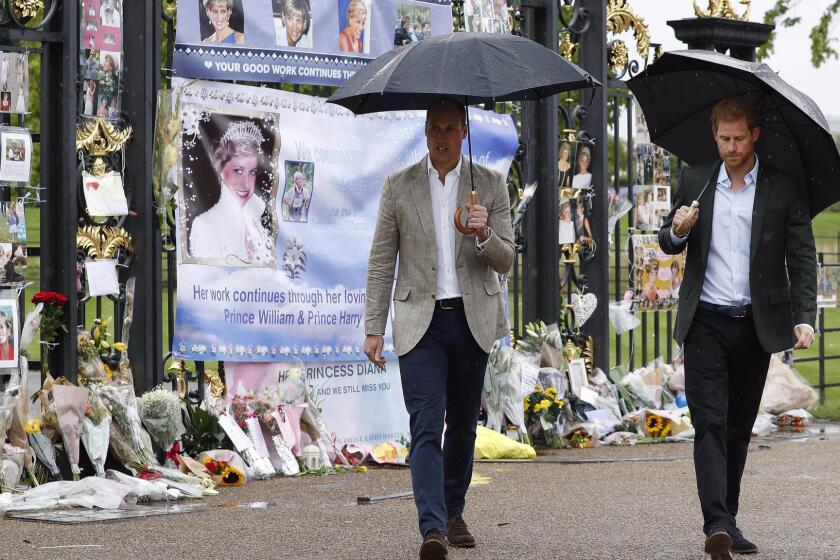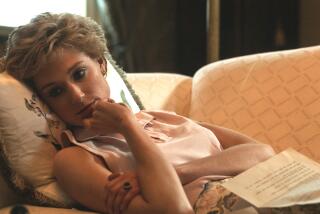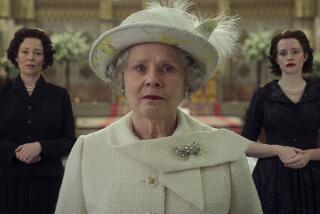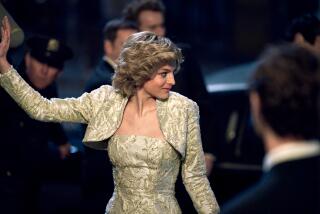Commentary: Princess Diana still fascinates us 25 years after her death. Here’s why
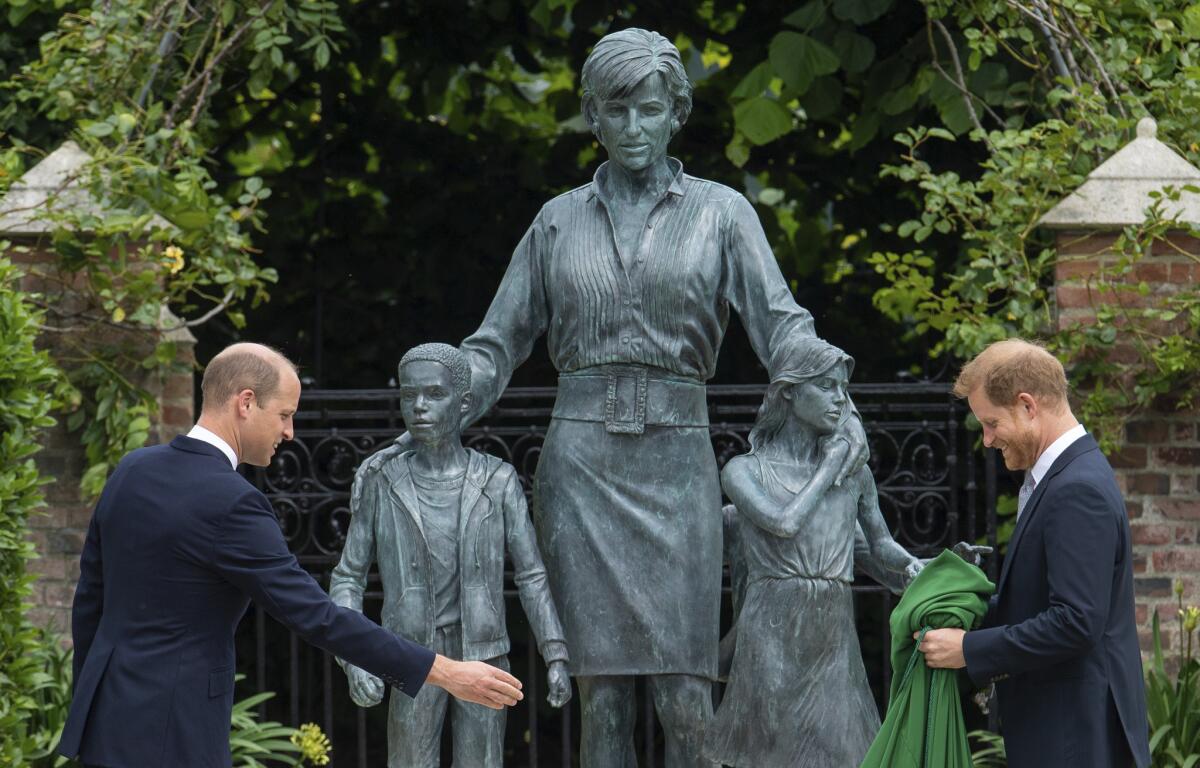
- Share via
On Aug. 31, it will have been 25 years since Diana, the princess of Wales, died in a Paris car crash and swept the world into mass mourning.
Yet, the woman dubbed “the people’s princess” by former British Prime Minister Tony Blair seems as popular as ever. In the last two years alone there have been several documentaries, (including “The Princess” on HBO and “Diana,” a six-part series on CNN); the 2021 movie “Spencer,” which earned Kristen Stewart an Oscar nomination; a short-lived Broadway musical; the Diana season of the popular Netflix series “The Crown” and the unveiling of a statue on the grounds of Kensington Palace in London that looks nothing like her. Before Stewart, actress Naomi Watts tried her hand at portraying the princess in the 2013 movie “Diana.”
She didn’t start out as anyone’s idea of a role model. She was 19-year-old Lady Diana, the daughter of an earl, when she got engaged to the bookish, hidebound Prince Charles, the heir to the British throne 12 years her senior and involved in a relationship with a married woman, Camilla Parker-Bowles. (Charles and Camilla are now married to each other.)
Her duty was to produce an heir and a spare (and she did: William and Harry) and follow Charles around on royal tours. But Diana was warm, charming and compassionate, and crowds went nuts for her. She let everyone hug her and famously hugged a child with AIDS in a Harlem hospital on a trip to New York.
Elizabeth II will celebrate 70 years as the ruling monarch of Britain. Whether she should be the last is a question, but it doesn’t need an answer now.
She always fascinated me: the clothes, the jewels, the rarity of her royal life. But the image she projected was less stuffy than the rest of the family into which she married. I reported on her, mostly from afar for the Washington Post then the L.A. Times, writing about her close up only when she made a couple of trips to the Northeast. I met her twice at receptions for journalists during official visits, the first time accompanied by Charles early in her marriage. Several years later, on a solo visit to New York City, she seemed more confident and chattier. Newspapers — serious and tabloid alike — were filled with stories about what was obviously a marriage unraveling before all our eyes.
By the last year of her life, divorced and on her own, she had sold off dozens of her elaborate evening gowns for charity at an auction at Christie’s in New York and turned herself into a human rights advocate, traveling to Angola in 1997 and walking on a cleared path through a still-dangerous land mine field. On the same trip, she cradled young children missing limbs. The attention she drew to the issue is believed to have spurred fundraising to clear minefields and the progress of a global treaty to ban them.
Diana was with her boyfriend, Dodi Fayed, the son of the Egyptian tycoon who owned Harrod’s in London, in the back seat of a speeding Mercedes being driven by a security professional trying to outrun paparazzi in Paris. (It would turn out later that the driver had alcohol and antidepressants in his system.) The only survivor was a bodyguard. Her death was shocking, and mourners blanketed the sidewalks of London with flowers.
Even as a longtime observer of Diana, I did not expect her mystique to be this enduring. But here we are.
Maybe some of it has to do with the current fascination with her two sons, Prince William, 40, and Prince Harry, 37, and especially their wives. Harry told Oprah Winfrey he worried that the outsized paparazzi interest in his wife, Meghan Markle, and lack of support from palace staff would echo his mother’s troubles and history might repeat itself in some way.
I first met Diana, the Princess of Wales, at an evening reception at the British Embassy in Washington in 1985.
Diana’s life seems like a movie plot with a tragic ending that can be endlessly revisited. But I think we continue to read and watch things about her because of this: She was stunning and enigmatic enough (no podcasts in her day) to keep us still speculating on who she really was and who she might have become had she lived. She would be 61 now.
I believe Diana would have become a full-fledged human rights advocate. I think she would have gone to Ukraine — just for a minute, but still.
She would have been horrified by the allegations made by Harry and Meghan of racism in the royal family. I was sent to England to cover the aftermath of her death for the paper. The Pakistani driver who picked me up at Heathrow told me that he believed Dodi and Diana had been murdered by British operatives who did not want to see the mother of the second heir to the throne involved with a nonwhite man. That wasn’t the first or last time I would hear that completely unfounded rumor, but it did seem to be a reflection of the racism that people of color felt in England at the time.
And Diana would have urged her two sons, whose relationship is reportedly strained these days, to hash out their differences and make up. And they would have done it.
Would she have convinced Harry and Meghan to stay in England and work through their reluctance at being working royals? Or would she have packed her bags and been on the plane with them to move to California? I suspect the latter — unless she had already moved here, found a house in Malibu and started her own podcast.
Will the public’s obsession with Diana last another quarter-century? Maybe it will be supplanted by the fascination with William and Kate and their three children, including the incorrigible 4-year-old Prince Louis, who, with his theatrical grimaces during a balcony appearance of the royal family, became the rogue star of the Queen’s Jubilee in June. Harry and Meghan, living in Montecito with their two children, 3-year-old Archie and 1-year-old Lilibet (whose middle name is Diana), are constantly scrutinized as they try to navigate some version of a public life.
No doubt, photographers will be watching for them out and about with the newest member of their family — they just adopted one of the 4,000 beagles rescued from a breeding and research plant in Virginia. No matter how fascinating her children may be, I suspect Diana will never quite vanish, and remain a cultural touchstone.
More to Read
A cure for the common opinion
Get thought-provoking perspectives with our weekly newsletter.
You may occasionally receive promotional content from the Los Angeles Times.

